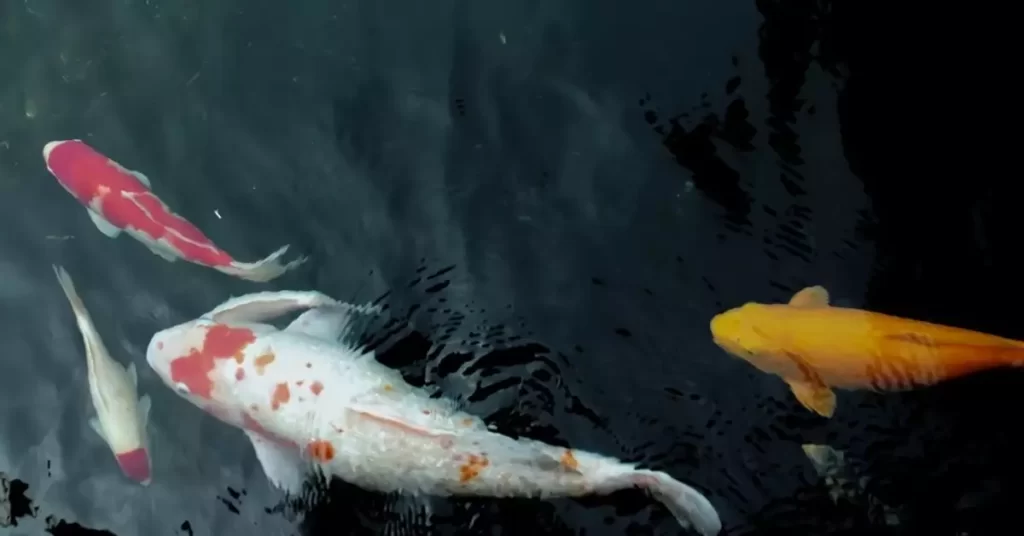You may have wondered if fish can see water, given that they live in it all their lives. This seemingly simple question piques our curiosity about the fish’s perception of the world around them.
In this article, we will dive deep into the science behind fish vision, their ability to see water, and how they perceive their underwater environment. So, let’s start exploring the world from a fish’s point of view!
Understanding Fish Vision
How Fish Eyes Work
Fish eyes function similarly to human eyes, with a few key differences. Both fish and human eyes contain rods and cones that are responsible for detecting light and colors.
However, fish possess a higher number of rod cells, which allows them to see better in low-light conditions. Fish also have different types and distributions of cone cells, enabling them to perceive a wider range of colors than humans.
Fish Eye Adaptations
Fish eyes have several unique adaptations to help them survive in their underwater environment. For example, they possess a spherical lens that can focus light more effectively in water than the human eye.
Their eyes also have a layer called the tapetum lucidum, which reflects light back into the retina, enhancing their ability to see in low-light conditions.

The Science Behind Water Visibility
Water visibility depends on factors such as water clarity, the amount of suspended particles, and the presence of dissolved organic matter.
These factors can affect the amount of light that penetrates the water, ultimately impacting how well fish can see underwater. The more light available, the better the visibility for fish.
Can Fish See Water?
How Fish Perceive Their Environment
Fish do not perceive water in the same way humans see air. Instead, they perceive their environment through changes in light and the presence of objects within the water.
Their highly adapted eyes allow them to detect variations in light levels and colors, helping them navigate and find food.
The Role of Refraction and Reflection
Refraction and reflection play a significant role in how fish perceive their environment. When light passes through water, it is refracted, which can distort how objects appear to fish.
Similarly, the reflection of light on the water’s surface can create additional visual cues for fish. Their eyes are adapted to interpret these cues, enabling them to navigate their environment effectively.

Fish Vision and Human Perception
While fish can see water to some extent, it is important to remember that their perception of the world is different from ours.
They perceive their environment primarily through variations in light and colors, rather than through direct observation of the water itself.
How Fish Communicate in Water
Fish communicate with each other through a variety of means, including visual cues, sounds, and chemical signals.
Their ability to perceive color and light variations can be essential for recognizing and interpreting these signals, especially in social interactions and mating rituals.
Other Sensory Systems in Fish
Fish rely on more than just their vision to navigate and interact with their environment. They possess several additional sensory systems, such as:
- Lateral line system: This system consists of a series of sensory organs that detect pressure changes and vibrations in the water, helping fish sense the movement and location of nearby objects and other fish.
- Olfactory system: Fish have a well-developed sense of smell that allows them to detect chemical cues in the water, such as the presence of food, predators, or potential mates.
- Electroreception: Some fish species, like sharks and rays, can detect weak electric fields produced by other organisms, aiding in prey detection and navigation.
Vision Adaptations in Different Fish Species
Fish species have evolved various vision adaptations to suit their specific environments and lifestyles. For instance:
- Deep-sea fish: These fish live in the dark depths of the ocean, where little to no sunlight penetrates. They often have large eyes with an abundance of rod cells, allowing them to see in extremely low-light conditions.
- Nocturnal fish: Fish that are active during the night, such as catfish, also possess adaptations for low-light vision, including a higher density of rod cells and a reflective tapetum lucidum.
- Shallow water fish: Fish that inhabit shallow waters, like coral reefs, are often exposed to bright sunlight. These fish typically have a higher number of cone cells, enabling them to see a wide range of colors and adapt to the vibrant environment.
The Impact of Water Clarity on Fish Vision
Water clarity can significantly affect how well fish can see their surroundings. Clear water allows more light to penetrate, resulting in better visibility.
In contrast, murky or turbid water can reduce visibility, making it more challenging for fish to detect visual cues.
Some fish species have adapted to these conditions by relying more on their other sensory systems, such as the lateral line and olfactory systems.
FAQs
Do fish see in color?
Yes, most fish can see in color, thanks to the presence of cone cells in their eyes. The specific range of colors they can perceive depends on the types of cone cells present in their eyes and their distribution.
Can fish see outside of water?
Fish can see outside of water, but their vision is likely to be distorted due to the difference in light refraction between air and water.
Their eyes are adapted for underwater vision, making it difficult for them to see clearly in the air.
How do fish perceive depth underwater?
Fish perceive depth primarily through the refraction and reflection of light in the water. They can also use their lateral line system to detect pressure changes associated with different water depths.
Conclusion
Fish do not see water in the same way humans see air, but they do perceive their environment through variations in light, colors, and the presence of objects.
Their eyes have unique adaptations that enable them to see effectively underwater and respond to different visual cues.
Fish also rely on additional sensory systems, like the lateral line and olfactory systems, to navigate and interact with their environment.
Understanding how fish see and perceive their world helps us appreciate the complexity of their sensory systems and the amazing adaptations that have evolved to help them thrive in diverse aquatic habitats.